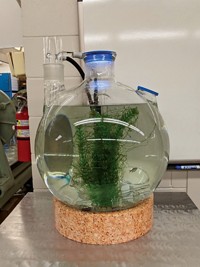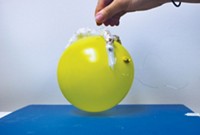Advertisement
Grab your lab coat. Let's get started
Welcome!
Welcome!
Create an account below to get 6 C&EN articles per month, receive newsletters and more - all free.
It seems this is your first time logging in online. Please enter the following information to continue.
As an ACS member you automatically get access to this site. All we need is few more details to create your reading experience.
Not you? Sign in with a different account.
Not you? Sign in with a different account.
ERROR 1
ERROR 1
ERROR 2
ERROR 2
ERROR 2
ERROR 2
ERROR 2
Password and Confirm password must match.
If you have an ACS member number, please enter it here so we can link this account to your membership. (optional)
ERROR 2
ACS values your privacy. By submitting your information, you are gaining access to C&EN and subscribing to our weekly newsletter. We use the information you provide to make your reading experience better, and we will never sell your data to third party members.
Sustainability
Newscripts
Dishing on dishwashing for a greener planet and playing games in a glove box
by Matt Davenport
March 15, 2020
| A version of this story appeared in
Volume 98, Issue 10
A dish-ertation

Consider the dishwasher paradox. Dishwashers save time and water compared with hand washing dishes while accounting for only about 10% of an average household’s appliance energy use. Yet these well-meaning machines cause nearly half of all appliance-based how-to-use disputes, according to the observations of this Newscripts writer.
Discussions about whether to prerinse—that is, to rinse dishes before loading—can be as contentious as some political debates. And disagreements over how to load dishes can send passive-aggressive chills through an otherwise happy home.
Thankfully, science can help resolve this problem. Last month, researchers led by sustainability expert Gregory A. Keoleian of the University of Michigan shared some science-based best practices for the dishwashing arts.
Collaborating with the appliance maker Whirlpool, the researchers considered the materials and energy costs of making a dishwasher, washing a decade’s worth of dishes, and ultimately disposing of a machine that had washed its last (Environ. Res. Commun. 2020, DOI: 10.1088/2515-7620/ab716b). It was a holistic look at the life of a dishwasher, spurred by the master’s-degree thesis of team member Gabriela Porras.
Unsurprisingly, a dishwasher consumes the most water and energy while it’s washing dishes. About 90% of the greenhouse gases tied to a dishwasher (from energy production) are also emitted during this phase. Thus, Keoleian tells Newscripts, there are opportunities to cut waste and emissions based on how we use our dishwashers.
For instance, the study recommends turning off a machine’s heat-dry option and not prerinsing dishes. If reading that creates crusted-on-food anxiety, we at Newscripts feel you. Keoleian says scrape the food away without running water. And, however you load a dishwasher, make sure it’s full before you run it.
These tips could save you over 6,000 L of water and 100 kg of carbon dioxide emissions per year compared with washing methods that, for example, leave a faucet running. In a bit of a twist, though, the study did reveal one specific hand-washing technique that is greener than dishwashers. That’s the two-basin method. Here, dishes are soaked and scrubbed in a basin with hot water, then rinsed in a basin with cold water. You can then happily let the dishes air dry, knowing you’ve saved energy by not involving a towel to launder, Keoleian points out.
Glove box skills that stack up

Although air is aces for drying dishes, it can be the bane of chemical reactions that are sensitive to oxygen and water vapor. Enter the glove box.
For those who have not had the delight of working in one, the glove box provides an inert environment for working with persnickety substances. The trade-off is that scientists must don bulky gloves to work inside, which takes some getting used to. This was on Timothy Shannon’s mind as he was preparing to teach his Chem 450 lab at Kalamazoo College. The class was prepping for air-sensitive experiments, and Shannon wondered how he could get students comfortable working in a glove box first. He put this to the class and one student, Chris Vennard, suggested they play a game called Jenga—inside the glove box.
For those who have not had the delightof playing Jenga, players take turns removing wooden blocks from different spots in a tower and stacking them on top. The person whose move causes the tower to fall loses.So what factors should folks who are interested in giving this a shot consider? Shannon has a small class that he split in half so that only six were playing at a time. Also important: “Move the chemicals away from the Jenga set,” Shannon says.
Matt Davenport wrote this week’s column. Please send comments and suggestions to newscripts@acs.org.





Join the conversation
Contact the reporter
Submit a Letter to the Editor for publication
Engage with us on Twitter